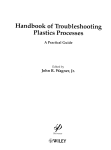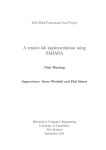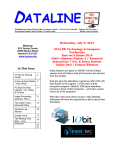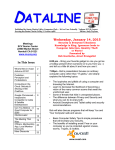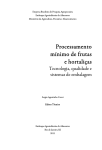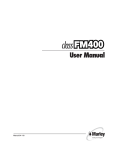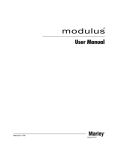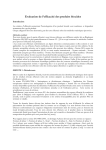Download The Basics of Troubleshooting in Plastics Processing
Transcript
The Basics of Troubleshooting in Plastics Processing An Introductory Practical Guide Muralisrinivasan Natamai Subramanian Scrivener ©WILEY This page intentionally left blank The Basics of Troubleshooting in Plastics Processing Scrivener Publishing 3 Winter Street, Suite 3 Salem, MA 01970 Scrivener Publishing Collections Editors James E. R. Couper Richard Erdlac Pradip Khaladkar Norman Lieberman W. Kent Muhlbauer S. A. Sherif Ken Dragoon Rafiq Islam Vitthal Kulkarni Peter Martin Andrew Y. C. Nee James G. Speight Publishers at Scrivener Martin Scrivener ([email protected]) Phillip Carmical ([email protected]) The Basics of Troubleshooting in Plastics Processing An Introductory Practical Guide Muralisrinivasan Natamai Subramanian Scrivener ©WILEY Copyright © 2011 by Scrivener Publishing LLC. All rights reserved. Co-published by John Wiley & Sons, Inc. Hoboken, New Jersey, and Scrivener Publishing LLC, Salem, Massachusetts. Published simultaneously in Canada. No part of this publication may be reproduced, stored in a retrieval system, or transmitted in any form or by any means, electronic, mechanical, photocopying, recording, scanning, or otherwise, except as permitted under Section 107 or 108 of the 1976 United States Copyright Act, without either the prior written permission of the Publisher, or authorization through payment of the appropriate per-copy fee to the Copyright Clearance Center, Inc., 222 Rosewood Drive, Danvers, MA 01923, (978) 750-8400, fax (978) 750-4470, or on the web at www.copyright.com. Requests to the Publisher for permission should be addressed to the Permissions Department, John Wiley & Sons, Inc., Ill River Street, Hoboken, NJ 07030, (201) 748-6011, fax (201) 748-6008, or online at http://www.wiley.com/go/permission. Limit of Liability/Disclaimer of Warranty: While the publisher and author have used their best efforts in preparing this book, they make no representations or warranties with respect to the accuracy or completeness of the contents of this book and specifically disclaim any implied warranties of merchantability or fitness for a particular purpose. No warranty may be created or extended by sales representatives or written sales materials. The advice and strategies contained herein may not be suitable for your situation. You should consult with a professional where appropriate. Neither the publisher nor author shall be liable for any loss of profit or any other commercial damages, including but not limited to special, incidental, consequential, or other damages. For general information on our other products and services or for technical support, please contact our Customer Care Department within the United States at (800) 762-2974, outside the United States at (317) 572-3993 or fax (317) 572-4002. Wiley also publishes its books in a variety of electronic formats. Some content that appears in print may not be available in electronic formats. For more information about Wiley products, visit our web site at www.wiley.com. For more information about Scrivener products please visit www.scrivenerpublishing.com. Cover design by Russell Richardson. Library of Congress Cataloging-in-Publication ISBN 978-0-470-62606-1 Printed in the United States of America 10 9 8 7 6 5 4 3 2 1 Data: Contents Preface xiii 1. Introduction 1.1 Market Trends 1.2 Importance of Plastics 1.2.1 Plastics vs Metal 1.2.2 Plastics vs Paper and Paper Board 1.3 Plastics Processing 1.4 Fundamentals References 2. Plastics Materials 2.1 Properties and Processing 2.1.1 Molecular Weight 2.1.2 Molecular Weight Distribution (MWD) 2.1.3 Flow Properties 2.1.4 Degree of Crystallinity 2.1.5 Surface Quality 2.1.6 Viscosity 2.2 Polyethylene 2.3 Polypropylene (PP) 2.4 Polystyrene 2.5 Polyvinylchloride (PVC) 2.6 Engineering Plastics 2.6.1 Acrylonitrile Butadiene Styrene (ABS) 2.6.2 Polymethylmethacrylate (PMMA) 2.6.3 Nylon 2.6.4 Polyethyleneterephthalate (PET) v 1 2 3 4 5 5 6 6 9 11 12 12 12 13 13 13 13 16 18 18 20 21 22 24 25 vi CONTENTS 2.6.5 Polycarbonate (PC) 2.6.6 Polyether Ether Ketone (PEEK) 2.6.7 Polytetrafluoroethylene (PTFE) 2.6.8 Polyacetal (POM) 2.6.9 Polyvinylidene Fluoride (PVDF) 2.6.10 Polyphenylene Sulfide (PPS) 2.7 Advantages 2.8 Fundamentals References 27 27 29 30 31 32 32 32 33 3. Plastics Additives 3.1 Antioxidants 3.2 Anti-block Agents 3.3 Antistatic Agent 3.4 Clarifying Agents 3.5 Slip Additives 3.6 Processing Aids 3.7 Antifogging Agents 3.8 Antiblocking Agents 3.9 Heat Stabilizers 3.10 Lubricants 3.11 Plasticizers 3.12 Coupling Agents or Surface Modifiers 3.13 Release Agents 3.14 Flame Retardants 3.15 Pigments 3.16 Light Stabilizers 3.17 Impact Modifiers 3.18 Blowing Agents 3.19 Nucleating Agents 3.20 Biocides 3.21 Fillers 3.22 Fundamentals References 41 42 43 43 44 44 44 45 45 46 47 48 48 49 49 49 50 50 52 52 53 53 56 56 4. Plastics Processing 4.1 Focus on Plastics Processing 4.2 Injection Molding 4.2.1 Injection Molding - Machine 61 62 63 64 CONTENTS vu 4.2.1.1 Ram Injection Molding Machine 4.2.1.2 Screw Injection Molding Machine 4.2.2 Injection Unit 4.2.2.1 Barrel 4.2.2.2 Screw 4.2.2.3 Clamping Unit 4.2.2.4 Hydraulic Unit 4.2.3 Mold 4.2.3.1 Gate 4.2.3.2 Runner 4.2.3.3 Sprue 4.2.3.4 Cavity 4.2.3.5 Nozzle 4.2.3.6 Vent 4.2.3.7 Ejection System 4.2.4 Injection Molding and Parameters 4.2.4.1 Temperature 4.2.4.2 Pressure 4.2.4.3 Time 4.2.4.4 Cooling 4.2.4.5 Velocity 4.2.4.6 Part Design 4.2.5 Injection Molding - Processing 4.2.6 Process Variables 4.2.6.1 Cushion 4.2.6.2 Shot Size 4.2.7 Advantages 4.2.8 Shortcomings 4.3 Extrusion 4.3.1 Extrusion - Basic Requirements 4.3.2 Extruder 4.3.2.1 Single Screw Extruder 4.3.2.2 Twin Screw Extruder 4.3.2.3 Feeder 4.3.2.4 Screw 4.3.2.5 Die 4.3.3 Polymer Melt 4.3.4 Extrudate Swell 4.3.5 Extrusion and Process Parameters 64 64 64 65 66 67 67 68 71 72 73 73 73 74 74 74 75 77 78 80 82 83 83 84 86 86 86 87 87 88 90 91 92 93 94 95 96 97 98 viii CONTENTS 4.3.6 Extrusion - Processing 4.3.7 Advantages 4.3.8 Shortcomings 4.4 Blow Molding 4.4.1 Blow Molding and Process Parameters 4.4.2 Extrusion Blow Molding 4.4.3 Injection Stretch Blow Molding 4.4.4 Advantages 4.4.5 Shortcomings 4.5 Thermoforming 4.5.1 Thermoforming and Parameters 4.5.2 Processing 4.5.3 Mold 4.5.4 Advantages 4.5.5 Shortcomings 4.6 Rotational Molding 4.6.1 Rotational Molding and Parameters 4.6.2 Mold 4.6.3 Processing 4.6.4 Pigmentation 4.6.5 Advantages 4.6.6 Shortcomings 4.7 Fundamentals 4.7.1 Injection Molding 4.7.2 Extrusion 4.7.3 Blow Molding 4.7.4 Thermoforming 4.7.5 Rotational Molding References 100 104 104 105 105 106 107 110 110 110 111 112 112 113 114 114 114 116 116 118 119 119 119 119 120 120 121 122 122 Troubleshooting - Problems and Solutions 5.1 Troubleshooting - Requirements 5.2 Injection Molding - Troubleshooting 5.2.1 Part Sticking in Cavities 5.2.2 Part Sticking in Core 5.2.3 Discoloration 5.2.4 Burnt Marks (Diesel Effect) 5.2.5 Part Sticks During Ejection 5.2.6 Jetting 133 135 136 140 141 141 143 143 144 CONTENTS 5.2.7 5.2.8 5.2.9 5.2.10 Dimensions Out of Specification Bubbles Internal Voids Flash (Over Substrate or on Periphery of Part) 5.2.11 Poor Weld Line 5.2.12 Low Gloss/Gloss Difference 5.2.13 Overmold Breaks/Impinges Through Hollow Substrate 5.2.14 Warpage or Warped Parts 5.2.15 Splay Marks/Delamination 5.2.16 Flow Marks, Folds and Back Fills 5.2.17 Ejector Pin Marks 5.2.18 Sink Marks 5.2.19 Shrinkage 5.2.20 Silver Streak 5.2.21 Short Shots 5.2.22 Brittle Part 5.2.23 Poor Plasticizing 5.2.24 Crack During Mold Release 5.2.25 Nozzle Drool 5.2.26 Short Shots no Burn Marks 5.2.27 Surface Ripples, and Pit Marks 5.2.28 Pellets not Melted 5.2.29 Air Entrapment in the Mold 5.2.30 Gate Blush Troubleshooting - Extrusion 5.3.1 "Bridging" at the Throat of the Feed Hopper 5.3.2 Brittle/Braking/Tearing 5.3.3 Contamination/Black Specks and Spots 5.3.4 Die Lines 5.3.5 Entrapped Gasses/Air Bubbles 5.3.6 Excessive Die Swell 5.3.7 Material Accumulation at Die 5.3.8 Low Gloss 5.3.9 Material Non-Homogeneous 5.3.10 Variable Thickness 5.3.11 Variable Output/Surging 5.3.12 Plate-Out on Die Lip 144 146 146 147 149 150 151 152 152 153 155 155 156 158 158 159 160 160 162 162 163 163 165 166 167 167 168 169 170 170 170 172 172 172 174 174 176 CONTENTS Troubleshooting - Blow molding 5.4.1 Extrusion Blow Molding 5.4.1.1 Curling 5.4.1.2 Hooking 5.4.1.3 Inconsistent Tail Length 5.4.1.4 Blowouts or Pin Holes 5.4.1.5 Poor Wall Thickness Distribution (Top to Bottom) 5.4.1.6 Asymmetric Part 5.4.1.7 Poor Weld 5.4.1.8 Poor Parting Line 5.4.1.9 Contamination in Parts 5.4.1.10 Flashing Tear 5.4.1.11 Holes in Pinch-Offs 5.4.1.12 Blowouts 5.4.2 Injection Blow Molding 5.4.2.1 Poor Gates (Fish Eyes, Hash, Tails, etc.) 5.4.2.2 Poor Gates 5.4.2.3 Rocker Bottoms 5.4.2.4 Incomplete Thread 5.4.2.5 Pig Tails 5.4.2.6 Short Shots 5.4.2.7 Parison Flashing 5.4.2.8 Neck Folds - Shoulder Cuts 5.4.2.9 Plastic Sticking to Core Rods Troubleshooting - Thermoforming 5.5 5.5.1 Blisters or Bubbles 5.5.2 Incomplete Forming or Poor Detail 5.5.3 Sheet Scorched 5.5.4 Changing in Color Intensity or Blushing 5.5.5 Whitening of Sheet 5.5.6 Webbing, Bridging or Wrinkling 5.5.7 Nipples on Mold Side of Formed Sheet 5.5.8 Too Much Sag 5.5.9 Sag Variation between Sheet Blanks 5.5.10 Chill Marks or Mark-off Lines on Part 5.5.11 Bad Surface Marking 5.5.12 Shiny!Streaks on Part 5.4 176 177 177 178 178 178 180 180 180 181 182 182 182 182 185 185 185 186 186 186 188 188 188 188 191 191 191 191 191 192 192 195 195 196 196 196 198 CONTENTS xi 5.5.13 Excessive Post Shrinkage or Distortion of Part Removing from the Mold 5.5.14 PartWarpage 5.5.15 Poor Wall Thickness or Excessive Thinning in Some Areas 5.5.16 Non-Uniform Pre-stretch Bubble 5.5.17 Shrink Marks on Part, Especially in Corner Areas (Inside Radius of Molds) 5.5.18 Too Thin Corners in Deep Draws 5.5.19 Part Sticking to Mold 5.5.20 Sheet Sticking to Plug Assist 5.5.21 Tearing of Part When Forming 5.5.22 Cracking in Corners During Service 5.6 Troubleshooting - Rotational molding 5.6.1 Bubbles on Outer Wall 5.6.2 Discolored Part 5.6.3 Flash Excessive 5.6.4 Long Oven Cycle 5.6.5 Low Density Less Than Estimated 5.6.6 Poor Mold Filling 5.6.7 Poor Properties 5.6.8 Rough Inner Surface 5.6.9 Surface Pitting 5.6.10 Uneven Wall Thickness 5.6.11 Warpage 5.7 Fundamentals References 202 204 204 205 205 207 207 207 208 208 208 208 211 211 211 213 213 213 215 215 Future Trends 6.1 Productivity 6.1.1 Reactive Approach 6.1.2 Proactive Approach 6.2 Automotive Applications 6.3 Medical Applications 6.4 Environmental Issues 6.5 Fundamentals References 217 217 218 218 218 219 219 220 220 Index 199 200 201 201 221 This page intentionally left blank Preface Plastics processing is a core technology in major sectors of the plastics industry. In spite of the growing importance of the field of plastics processing, a clear and uniform practical guide covering the entire field of troubleshooting of plastics processing has not been presented until now. The Basics of Troubleshooting in Plastics Processing: An Introductory Practical Guide will appeal to all those who are involved in the plastics production sector. The material in the book covers both fundamental and practical aspects of plastics processing and attempts to provide the necessary background to understand the factors that constitute successful plastics manufacturing. In an effort to mirror the goals of the plastics industry, the scope of the book emphasizes the importance of the high quality production of end products, processing, while deliberately restricting coverage of machine details to the main processing technologies. These technologies are: injection molding, extrusion, extrusion blow molding, injection blow molding, thermoforming, and rotational molding. By including fairly comprehensive details of technical information and reference material, this ensures the book is suitable for classroom and industry training purposes, without affecting its overall usefulness as a technical and reference work. It will be very suitable for research workers, engineers and operators in industry, students in plastics processing, as well as to all those seeking an introduction in plastics processing. The framework of the book underscores both the book's academic and professional aspirations. Thermoplastics materials and characteristics are discussed in Chapter 2. A useful introduction of additives is covered in Chapter 3. The plastics processing techniques occupy Chapter 4 which also gives xni xiv THE BASICS OF TROUBLESHOOTING IN PLASTICS PROCESSING information pertinent to troubleshooting. Chapter 5 deals specifically with troubleshooting problems and solutions and elucidates the various control measures available in plastics processing. Chapter 6 briefly presents the future trends related to plastics. My major objective in writing this book was to provide a thorough background in plastics processing which is particularly important in order to increase the productivity and reduce wastage. Additionally, I hope this book will help people to develop the skills necessary to solve the problems in a stepwise manner. I would like to thank Dr. A. Thamaraichelvan, and Mr. A.N. Sapthagireesan for their encouragement. In addition, special thanks are due to my wife and sons for their support. I am especially grateful to Mr. Martin Scrivener and editorial staff at Scrivener Publishing for an excellent and professional job. Muralisrinivasan Natamai Subramanian November 2010 1 Introduction Plastics have become an integral part of our lives. Plastics are an excellent and very useful material and they are functional, hygienic, light, and economical. Using a key polymer processing system, plastics produce diverse products used in packaging, automotive and industrial applications, and also extensively used in medical delivery systems, artificial implants and other healthcare applications, water desalination, and removal of bacteria, etc. Until the 1930s and in early 1940s, thermoplastics were not common material. Ever since the first industrial scale production of plastics (synthetic polymers) took place in the 1940s, the production and consumption has increased considerably. Although plastic materials are relatively new, they have become basic and indispensable in our life with different shapes, sizes, and applications that can be seen daily at home, office, and even on the street. The growth in the manufacture of thermoplastic products for various applications has been considerably increased. 1 2 THE BASICS OF TROUBLESHOOTING IN PLASTICS PROCESSING It includes many light engineering applications. The plastics materials usage for food packaging has obvious advantages associated with the non-toxic nature of these materials and their resistance to chemical and biological degradation [1]. 1.1. M a r k e t Trends Today, the requirements are constantly changing and rising to higher levels [2]. The world's annual consumption of polymer materials has increased from around 5 million metric tons in the 1950s to nearly 100 million metric tons today [3, 4]. The worldwide demand for plastic pipes is forecast to increase 4.6% annually through 2012 to 8.2 billion meters or 18.2 million tons. Demand for HDPE (polyethylene) pipes will benefit from use as small-diameter pipes in natural gas transmission, as conduit for electrical and telecommunications applications, and as corrugated pipes for drains and sewers [5]. The US market for plastic healthcare packaging is expected to reach 3.8 billion pounds of products in 2010. This amount is forecast to increase to nearly 5 billion pounds in 2015. PP (polypropylene) packaging, the largest segment of the market, will reach 1.3 billion pounds in 2015, after increasing by 6.3% per annum from the estimated 2010 total of nearly 1 billion pounds [6]. Global demand for PE, the largest-volume basic polymer, is expected to grow about 4.2% per year to reach about 81 million metric tons by 2013. Demand for engineering plastics will rise by 3.1% per year to reach 5.4 billion lbs by 2012. Polycarbonate, nylon, and ABS will continue to be the largestvolume engineering plastics, accounting for more than 75% of total demand by 2012 [7]. Polymer demand has been driven by high levels of investment particularly in packaging, appliances, consumer electronics, and automotive [8]. However, in the modern global market, quality is a key issue to remain competitive in business. Quality can no longer be simply the result of an inspection INTRODUCTION 3 process, but very much part of the strategic planning process of successful companies [9]. 1.2 Importance of Plastics Plastics are increasingly important in the manufacture of materials due to their significant higher strength to weight ratio and stiffness, as well as impact strength. The main drivers for the rapid increase in their use are low cost and the possibility of achieving total recyclability. But the large scale and widespread use of plastics is due to its low density and ease of processing. Plastics are macromolecules derived from monomers, also called polymer. The word "poly" meaning many and "mer" designating the nature of the repeat unit [10,11]. Polymers are from synthetic or naturally occurring material which can be used with modification to suit with respect to processing. The term "polymer" is these days known as "plastics" when referring to macromolecules like polypropylene, polystyrene, etc. Plastics are constructed by the covalent linking of simple molecular repeated units [12]. Plastics are composed of carbon, nitrogen, oxygen, sulfur, chlorine, fluorine, and silicon. Moreover, plastics are made from petrochemical products which are a rich source of methane, ethylene, aliphatic, and aromatics. Variations in the elements make the plastic into stiff or flexible, linear or branched, and hard or soft. Plastics are classified based on recyclability into thermoplastics and thermosets. Polyethylene (PE), polypropylene (PP), polyvinylchloride (PVC), etc., are some of the thermoplastics and phenol formaldehyde, urea formaldehyde, etc., are examples of the thermosets. Both thermoplastics and thermosetting materials may be molded and then cooled to obtain the end product. Thermoset once molded cannot be either softened or reprocessed. Thermosets lead to products which are not recyclable. Moreover, it will form a network and it can neither be melted 4 THE BASICS OF TROUBLESHOOTING IN PLASTICS PROCESSING nor reprocessed. Once shaped, it can be altered by post forming operations if required. Pre-polymers are to be made before processing in thermoset processing. However, thermoplastics soften while heating and solidify during the cooling process. Thermoplastics can be recycled by either direct heating or after grinding into granules of scrap products [13]. Processing technology that shapes material and technology of plastics allows the manufacture of parts with lightweight, precision and strength, and low cost. It is cheaper than metal or ceramic processing. However, to use plastic effectively and to have the best advantage of its application, specific characteristics or physical properties must be considered. In plastics processing, with technology and application advances, conventional product replacement and unlimited innovation can take place. Plastic raw materials are also widening its range of products. Achieving higher performance with increased quality is the major challenge in manufacturing today. Plastics processing, therefore, requires constant and sometimes fundamental change. Moreover, as plastics have replaced many conventional materials, such as metal and wood, in many applications throughout the world, the growth will be accelerated by the tendency to substitute plastics for metal [14]. 1.2.1 Plastics vs Metal When plastics are compared with metals, some of the properties of plastics can be considered either favorable or unfavorable depending upon the application. Plastics are not so strong as metal. However, plastics have certain properties to be considered as advantageous for engineering applications. Plastics have better chemical and moisture resistance. Plastics are more resistant to shock and vibration than metals. Plastics are usually easier to fabricate than metals. Nylon material is self-lubricating and does not require any external lubrication during operation. INTRODUCTION 5 Table 1.1 Materials properties comparison. No. Property Plastics Metals Paper Wood 1. Density Low High Low Low 2. Mechanical properties Better Good Poor Poor 3. Chemical Properties Good Better Poor Poor 4. Water resistance Good Corrosive Absorb Absorb 5. Shock and vibration resistance Good Better Poor Poor 6. Microbial resistance Good Poor Poor Poor 7. Degradation Difficult Easy Easy Easy 1.2.2 Plastics vs Paper and Paper Board Paper and paperboard are widely used as food packaging materials and have been used with a number of chemicals such as slimicides, bleaching agents, and inks during the production process. Virgin paper and paperboard products produced by pulping, bleaching, and treatment processes undergo severe chemical treatment and it is impossible to eliminate the chemical residue present [15-17]. Hence, migration of chemicals from paper packaging to the food is quick resulting in toxicity to humans as being the main concern. 1.3 Plastics Processing Plastics processing requires the knowledge fundamentals of the raw material, additives, process control, and finally the product properties required to the finished end product. Today, polymer contains a package of ingredients to modify its properties while processing, or at its end product stage to create a new one. In thermoplastics, processing techniques can be classified into either batch or continuous process. Batch processes 6 THE BASICS OF TROUBLESHOOTING IN PLASTICS PROCESSING include injection molding, thermoforming and rotomolding. Extrusion of plastics is a continuous process. However, blow molding is available both in batch and continuous process. In these days, online continuous thermoforming machines are available along with extrusion process. As the scientific techniques become available, the plastics processing is quickly incorporating the changes. However, new solutions pose new problems so these continue to be challenges to overcome. Troubleshooting helps to solve the problem at the root and increase the production efficiency during processing. 1.4 Fundamentals • Based on recyclability, plastics can be divided into thermoplastics and thermosets. • Knowledge of properties with respect to plastics raw material or its end product is essential to establish the trouble free plastics processing. References 1. Plastics versus Food Contamination, Corrosion Technology, June 1965. 2. Reilly, J.F., Doyle, M., Kazmer, D., An assessment of dynamic feed control in modular tooling, /. Inject. Mold. Technol. 5 (1) (2001) 49-59. 3. Takoungsakdakun, T., Pongstabodee, S., 2007. Separation of mixed post-consumer PET-POM-PVC plastic waste using selective flotation. Separation Purification Technology 54 (2), 248-252. 4. Burat, F. Giiney, A. and Olgaç Kangal, M../ Waste Management 29 (2009) 1807-1813. 5. Macplas International, March 2009, p. 20. 6. Plastics and Rubber Weekly, 28th May 2010, p. 11. 7. Chemical Week, 171, No.16, 8th-15th June 2009, p. 22-26. 8. International Bottler and Packer, 83, No.5, May 2009, p. 12-13. 9. McKeown, P., (1992), "Implementing quality improvement programmes", Robotics & Computer Integrated Manufacturing, Vol. 9 No. 4 / 5 , pp. 311-20. 10. Mark, H. and Whitby, G.S., (eds), Collected Papers of Wallace Hume Carothers on High Polymeric Substances, John Wiley & Sons, NewYork, 1940. INTRODUCTION 7 11. P.J. Flory, Principles of Polymer Chemistry, Cornell University Press, Ithaca, NY, 1953. 12. H. Staudinger, From Organic Chemistry to Macromolecules, John Wiley & Sons, New York, 1970; H. Staudinger, Chem. Ber., 1924,57,1203. 13. Throne J.L. Adv Polym Technol 1987;7(4):347. 14. Nunez, A.J., Sturm, P.C., Kenny, J.M., Aranguren, M.I., Marcovich, N.E., Reboredo, M.M. Mechanical characterization of polypropylenewood flour composites.} Appl Polym Sei 2003;88(6):1420-8. 15. Ozaki, A.,Yamaguchi, Y, Fujita, T., Kuroda, K., Endo, G., Chemical analysis and genotoxicological safety assessment of paper and paperboard used for food packaging, Food and Chemical Toxicology 42 (2004) 1323-1337. 16. Arvanitoyannis, I.S., Bosnea, L., Migration of substances from food packaging materials to foods, Crit. Rev. Food Sei. Nutr. 44 (2004) 63-76. 17. Vitrac, O. Mougharbel, A., Feigenbaum, A., Interfacial mass transport properties which control the migration of packaging constituents into foodstuffs, /. Food Eng. 79 (2007) 1048-1064. This page intentionally left blank 2 Plastics Materials Plastics material undergoes different and complicated thermomechanical processes. It experiences significant change in rheological, mechanical, and transport properties due to large variations and rapid cooling. The term "polymer" is preferred to "resin" when referring to a high molecular weight substance like polystyrene or polypropylene. Plastics are: • Made from chemical raw material composed of atoms of carbon in combination with other elements [1, 2] called monomers, which are basic materials including those made from coal, alcohol, natural gas and petroleum. • Made up by the repeated addition of one or more types of monomeric units. Plastics have progressed with invention efficiently and products can be manufactured economically. But various plastics 9

























